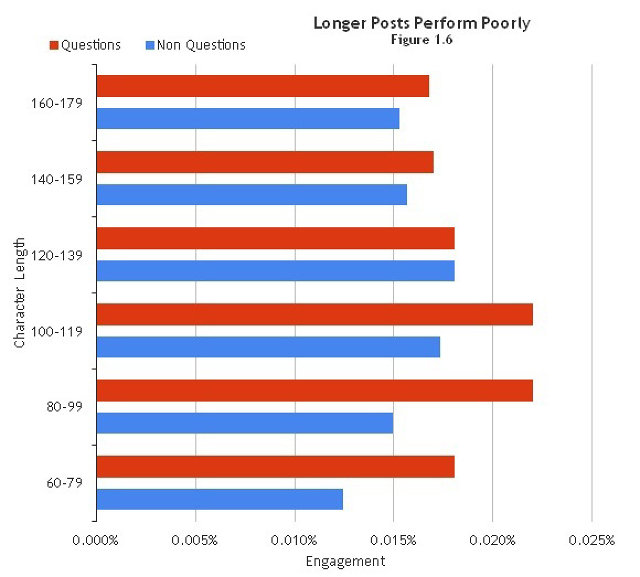9 Social Media No-Nos in Real Estate
You need a driver’s license to operate a car, need a passing transcript to graduate college, but all you need to create a social media account is an email address and a username. There are no gatekeepers; the social media landscape is basically the wild west.
Every social media platform comes with a set of rules and best practices – especially for real estate businesses. Unfortunately, these rules are unspoken, and sometimes you have to find out about them the hard way. But never fear: we’ve prepared a list of the top social media no-nos for real estate companies so that you can avoid them and create an effective strategy that engages your audience and drives traffic to your site.
Keep reading to learn more about leveraging social media for real estate, what to avoid, and how to elevate your social strategy.
1. Blabbing on and on about your company.
Don’t let your entire feed turn into a sales-y pitch. Your company is run by people, not robots. The rule of thumb is to use 80% of your posts for conversation and 20% of your posts for promotion. The idea is that the majority of your posts are constructed for your audience – whether they are inspirational, educational, or entertaining. By posting a mixture of topics, you can position yourself as a go-to resource for your audience and also build trust. Some post topics can include events happening in your community, how to winterize a home, highlighting local businesses, and so much more. And, since real estate is built on relationships, varying your posts can also demonstrate your community connections, giving you opportunities for referrals.
2. Long-winded posts.
The U.S. Navy created an oft-quoted acronym in the 1960s: K.I.S.S. In other words, “Keep It Simple, Stupid.” The KISS principle dictates that most systems work best when made simple, not complicated. The KISS principle also applies to social media. Though posts on Twitter are designed to be short and simple, you can still drive a lot of engagement by leveraging hashtags, simply retweeting a post, or retweeting and adding your own commentary. Facebook for real estate has seen a lot of change in the past several years. For instance, native video posts are one of the best ways to get in with the algorithm. As for actual posts, the ideal length is on the shorter side, however, you can also leverage hashtags to drive engagement. Similarly, captions on Instagram are best if on the shorter side, but you have even more opportunities to use hashtags to get in front of people who are interested in your business. Lastly, LinkedIn for real estate can be used to highlight achievements, shout out your team, and more. And, posts with “see more” in them receive up to 66% more engagement. Just as every real estate business is unique, it’s essential to understand that there is no one size fits all social media platform or strategy. Finding out where your audience lives and what engages them the most is essential for crafting the most effective social media strategy for real estate.
3. Stretching yourself thin on social media.
We’ve said this before, and we’ll say it again: you can’t be everywhere at once. Pick a handful of social media sites that work best with your company and your business goals. Leave the rest alone. Too many social media pages mean not having enough time to make each of them shine. Choose wisely. And, social media offers analytics (whether natively or on a third-party platform like Sprout Social or Hootsuite) that aid in determining which channels to focus on. Finding someone who understands those metrics and how they apply to your company is essential to understanding where your audience is most active.
4. Posting too much content outside of your industry.
When you’re a real estate company or agent, your fans follow you for a reason. Finding the right balance between posting real estate-related content and content that shows off who you are as a person (or company) is a great way for prospective clients to get to know you and build trust. However, it’s important not to stray too far from real estate-related content – staying on brand allows new followers to look at your feed and gather a quick understanding of what you or your company is about and how you can help them with their needs. Consider your target audience and the message your company is trying to spread when curating your content. When in doubt, play it safe, and stay industry focused.
5. Focusing solely on likes and followers.
Likes and followers are called vanity metrics for a reason: the numbers make you feel good about your company, but they don’t necessarily translate into a successful web presence. When social media first started picking up, some companies began buying Facebook likes and Twitter followers by the hundreds—wrong move. Sure, the numbers looked good on paper, but no one was actually engaging with their brand. When measuring your social media influence, focus on engagement to report your success: comments, conversations, retweets, etc. Good engagement can look like followers interacting with your posts, whether it be likes, comments, or reposts on a consistent basis. The goal is to have genuine engagement and develop an audience. One way to do so is by responding to comments and keeping the conversation going. Your brand identity should translate through all social media interactions, how you respond matters!
6. Posting exact copies of your content across all social accounts.
No one likes a copycat, even when it’s you copying yourself. If you post the same exact content to your Facebook, Twitter, Instagram, and LinkedIn pages, then you could be boring your followers to death. If you post redundant information on all of your pages, then what’s the benefit for your fans in following all of your pages? You can still post the same blog posts and articles to each of your social media pages, but take the time to craft different intros and angles on the piece and adhere to each platform’s best practices. Do shorter posts with hashtags perform best? What about longer posts? Adapting your content to what works best on each platform gives your articles the maximum amount of exposure without being overly repetitive. Also, take the time to present the same blog posts and articles in different mediums. If you share the text-only version on Facebook, then share an infographic about the piece on LinkedIn. This strategy varies your social media appearance and makes things a little more interesting for your followers. Plus, some platforms, like Facebook and Instagram, prefer video over image or text-only posts. Doing so not only gets your content in favor of the algorithms but also extends your content’s lifecycle. This is especially beneficial when you have limited time to plan out your social media calendar for real estate.
7. Not experimenting.
Always. Be. Experimenting. How else can you improve your social media strategy for real estate? Think about the format and layout of your posts. Try different kinds of visuals to reach different audiences. Try interviews, Q&As, and regular ol’ blog posts. And, because platforms are constantly adding new features, it’s important to explore every avenue that makes sense on each platform – you never know what might work!
8. Ignoring the data.
This mistake goes hand-in-hand with experimentation. What good is it to experiment if you’re not looking at the numbers? As mentioned previously, you should constantly monitor your content to see which posts get the most traction and which posts are left in the dust. Each of us creates content around gut feelings about our audience and the market. But in the end, gut feelings don’t always lead to success. Numbers show you how your content performs in the real world. Listen well. If one of your posts gets 10 comments and a retweet while another gets two comments and zero retweets, then it’s obvious that the first post was more successful. As you move forward in your content, refine your approach to mimic your most successful posts and create a content calendar that is more tailored to what engages your audience the most.
9. Not pointing posts to your website.
Each post or tweet is an opportunity to point your followers to your website. Since your real estate website should be designed around lead generation and strategic calls to action, it behooves you to funnel as many people to your site as possible. Any time you promote a real estate listing online, make sure to tie your website to it. Even then, there is a fine balance between posting too much about your site and too little. Don’t spam your followers with tons of links to your homepage; the trick is to send your followers to interior pages on your site when those pages are relevant to your posts. Incorporating your website in your posts should seem more passive than promotional, especially when it comes to sharing information such as blog posts.
Looking to elevate your digital marketing strategy for real estate? Connect with us today for specific recommendations to grow your business.










